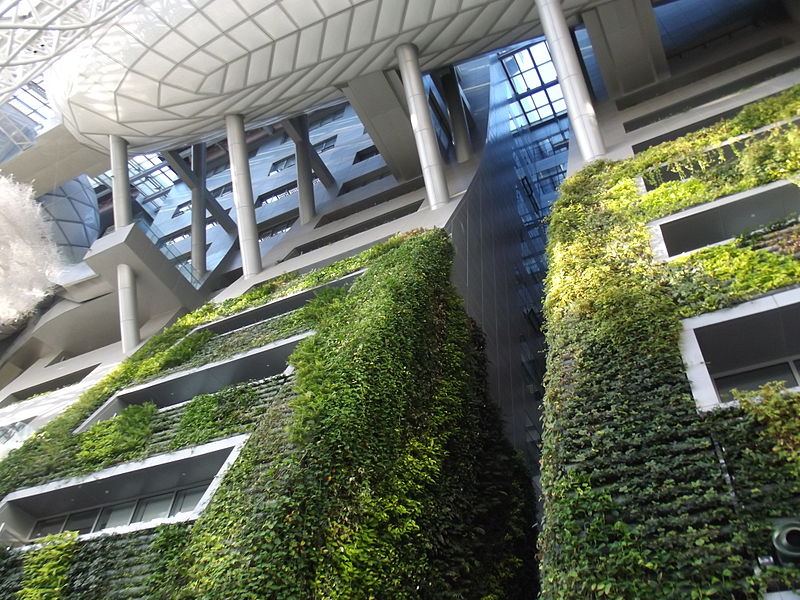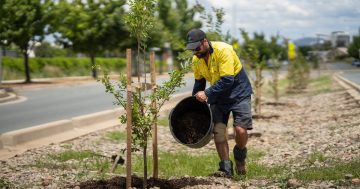
A green roof in Toronto. There are questions about their effectiveness in Canberra’s climate. Photo: Wikimedia Commons.
CSIRO scientists are investigating how much different types of living infrastructure – including green roofs and walls – can cool Canberra’s urban landscape compared to trees.
The work follows previous CSIRO research last year to develop a tool to calculate how the benefits of things such as ponds and shrubs would be equivalent to tree canopy, as part of the ACT Government’s Living Infrastructure Plan.
The Plan includes a 30 per cent tree canopy target by 2045, which allows equivalent forms of living infrastructure to count towards it.
While the CSIRO research produced a measure for three ecosystem benefits across 10 non-tree types of living infrastructure, cooling was not included.
Now the government has engaged CSIRO again to come up with a measure of cooling for 11 types of living infrastructure – including trees and tall shrubs, bioretention basins, wetlands, and shrubs, as well as green walls and green roofs in buildings – to determine what quantity equates to canopy coverage.
A government spokesperson said this would ensure that where alternative types of living infrastructure are deployed, they can be accounted for against the LIP targets, recognising that not all types of living infrastructure provide equal benefits.
The spokesperson said that including equivalent forms of living infrastructure in the 30 per cent target recognised that multiple approaches will be needed to build resilience in the face of a changing climate.
“Urban densification introduces new challenges for which innovative and ecologically sustainable urban development solutions will need to be considered and adopted,” the spokesperson said.
“Including other forms of living infrastructure in the 30 per cent canopy (or equivalent) target provides for both urban heat mitigation and urban densification to occur, therefore allowing for both objectives to be met.”

A green wall at Seoul City Hall. Photo: Wikimedia Commons.
Conservation Council ACT Executive Director Helen Oakey said the work was welcome and would help the government evaluate the worth of investing in such infrastructure.
“Some look like they would deliver really good urban cooling benefits but they don’t know yet what that the benefit ratio is going to look like. Is it going to be value for money?” she said.
Ms Oakey said there were also questions about the value of green roofs and walls in Canberra’s already dry and changing climate.
This work would help government and developers gauge how much they would contribute to mitigating urban heat, she said.
“There are significant questions about how effective green roofs might be in Canberra because they have been used in places where there is a lot of rainfall, and things grow really easily,” she said.
“We don’t know if they’ve been used in places where they have significant periods of low rainfall. They need to be very well maintained, they’re not in the ground so resilience is lot lower, and they need a lot of care and investment going forward because they are in an artificial environment.
“Sometimes things can be very fashionable but that doesn’t mean they’re effective.”
Ms Oakey said this was about determining what was going to be effective in the ACT environment and its changing climate.
She said it was important work that should be guiding government, developers and planning legislation.
Ms Oakey also said that while the government needed to get on with planting the promised 450,000 trees as part of its urban forest strategy, it should not ignore shrubs that provide habitat for birds and pollinators.
CSIRO is due to deliver its work by 25 June.
















